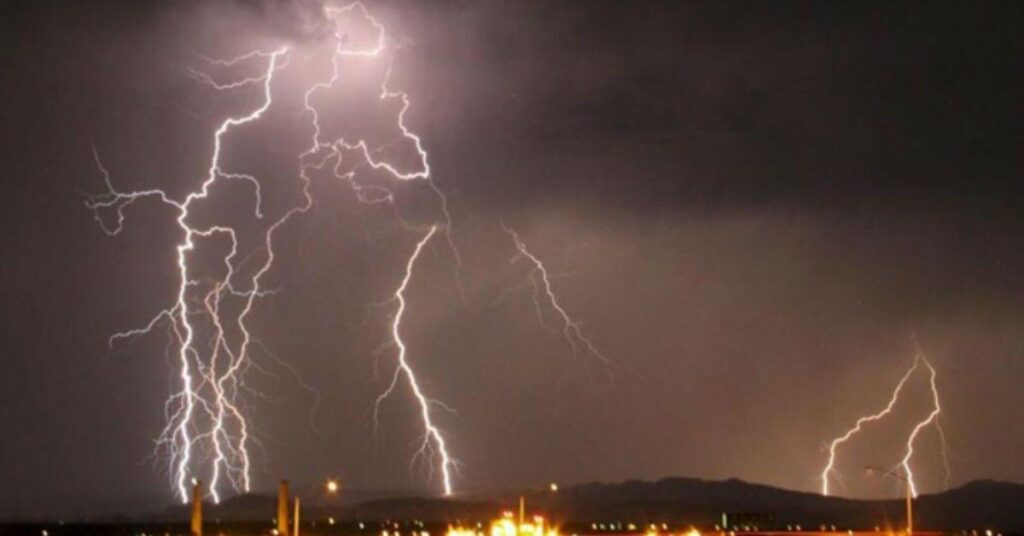Are you curious to know what is kal baisakhi? You have come to the right place as I am going to tell you everything about kal baisakhi in a very simple explanation. Without further discussion let’s begin to know what is kal baisakhi?
In certain parts of India, the scorching heat of summer brings not only soaring temperatures but also a phenomenon known as Kal Baisakhi. Also referred to as Nor’westers, these powerful thunderstorms with intense gusty winds and heavy rainfall hold a special place in the cultural and meteorological fabric of the region. In this blog, we will delve into the meaning, characteristics, and significance of Kal Baisakhi, unraveling the mysteries of this dramatic weather event.
What Is Kal Baisakhi?
Kal Baisakhi is a weather phenomenon specific to the Indian subcontinent, particularly prevalent in the states of West Bengal, Bihar, Jharkhand, and Odisha. The term “Kal Baisakhi” can be broken down to “Kal,” meaning “black” or “dark,” and “Baisakhi,” referring to the month of Baisakh in the Hindu calendar (April-May). The name aptly describes the nature of the storms, which typically occur during the month of Baisakh.
Characteristics Of Kal Baisakhi:
- Thunderstorms: Kal Baisakhi storms are characterized by intense thunderstorms with dark, ominous clouds looming over the sky. Thunder and lightning are common during these storms, adding to the dramatic nature of the event.
- Strong Winds: The storms are accompanied by strong, gusty winds that can reach speeds of 60-70 kilometers per hour or even higher in some cases. These powerful winds can cause damage to trees, structures, and infrastructure.
- Heavy Rainfall: Kal Baisakhi brings torrential downpours, resulting in heavy rainfall within a short period. The rainfall can be localized and intense, often leading to waterlogging and flooding in low-lying areas.
- Short Duration: While the intensity of Kal Baisakhi storms can be significant, they are relatively short-lived. The storms typically last for a few hours, offering a temporary respite from the scorching summer heat.
Cultural Significance:
Kal Baisakhi holds cultural significance, particularly in West Bengal, where it is celebrated with enthusiasm and joy. The storm’s arrival during the month of Baisakh is seen as a symbol of nature’s power and a reminder of the cyclical nature of life. It is believed to cleanse the environment, purify the air, and bring relief from the sweltering summer heat.
Impact And Precautions:
- Agriculture: Kal Baisakhi storms can have both positive and negative impacts on agriculture. While the rainfall replenishes soil moisture, aiding in crop growth, the high-intensity winds and hailstorms associated with Kal Baisakhi can damage standing crops and fruit-bearing trees.
- Infrastructure and Safety: The strong winds of Kal Baisakhi storms have the potential to cause damage to buildings, electric poles, and other infrastructure. It is essential to take necessary precautions to ensure the safety of individuals during such events.
- Economic Impact: The storms can disrupt transportation, power supply, and other essential services, resulting in temporary economic setbacks for the affected regions.
Precautions And Safety Measures:
- Stay Indoors: It is advisable to stay indoors during the occurrence of a Kal Baisakhi storm to avoid potential hazards caused by strong winds, lightning, and heavy rainfall.
- Secure Outdoor Objects: Secure or bring indoors any loose objects, such as furniture, potted plants, or equipment that could be blown away or damaged by the strong winds.
- Follow Weather Updates: Stay informed about weather forecasts and updates provided by local meteorological authorities to plan activities and take necessary precautions accordingly.
- Post-Storm Inspection: After the storm has passed, conduct a visual inspection of your surroundings to assess any damages and report them to the relevant authorities, if necessary.
Conclusion:
Kal Baisakhi storms embody the dramatic weather patterns of the Indian subcontinent during the summer months. As awe-inspiring as they are, these intense thunderstorms with their gusty winds and heavy rainfall require caution and preparedness. Understanding the characteristics and cultural significance of Kal Baisakhi allows us to appreciate the forces of nature and adapt to the ever-changing weather patterns, ensuring our safety and well-being during these meteorological phenomena.
FAQ
What Is Called Kal Baisakhi?
Violent thunderstorms in the Gangetic plains of India are regionally known as Kal Baisakhi or Nor’westers. These localised events are usually correlated with thunderstorms accompanied by strong squally winds and torrential rainfall.
What Happens In Kaal Baisakhi?
Kalbaisakhi originate over the Chhotanagpur Plateau between the states of Bihar and Jharkhand. They gradually gain strength as they move southeastwards and impact the states of Odisha, West Bengal and Assam with gale-speed winds (often exceeding 100 km/h (62 mph)), torrential rains and hailstorms.
Why Does Kal Baisakhi Occur?
Nor’westers or Kal Baisakhi are storms that indicate the beginning of the Monsoon. They are wild winds that are caused due to rising heat, and they result in low-pressure troughs that can attract cyclones and thunderstorms.
What Is Kal Baisakhi And Loo?
Answer: Kal Baisakhi These are local thunderstorms associated with violent winds, torrential downpours, often accompanied by hail. Loo These are strong, gusty, hot, dry winds blowing during the day over the North and North-Western India.
I Have Covered All The Following Queries And Topics In The Above Article
What Is Kal Baisakhi Class 9
What Is Meant By Kal Baisakhi
What Is The Local Name Of Kal Baisakhi In Assam?
What Is Called Kal Baisakhi
What Is Kal Baisakhi In English
What Is Kal Baisakhi Class Ninth
What Is The Meaning Of Kal Baisakhi
What Is Kal Baisakhi
What causes Kal Baisakhi
What is Kal baisakhi?



